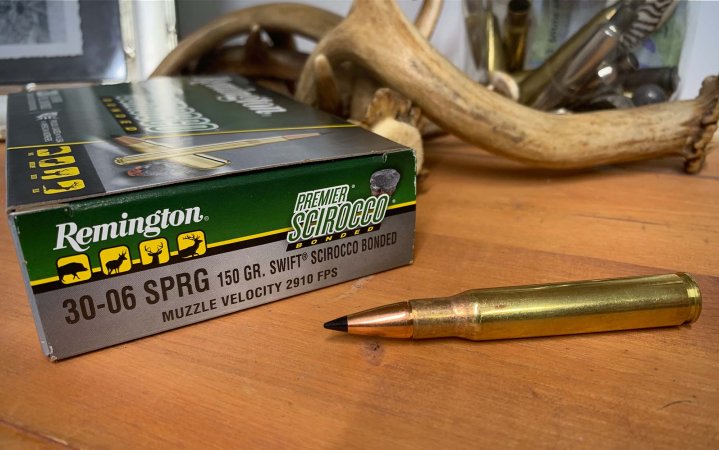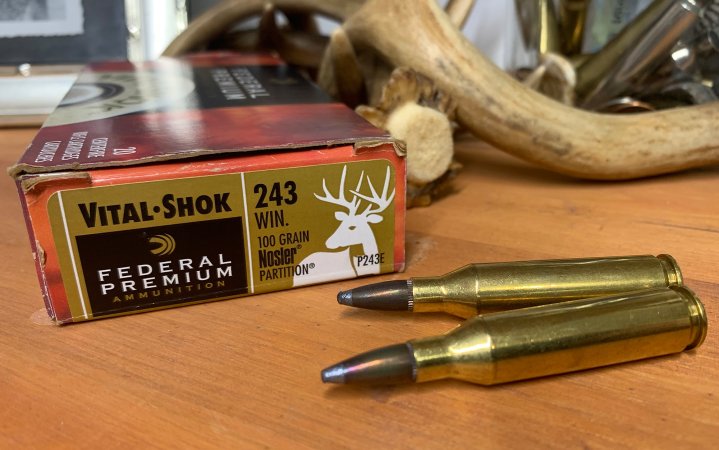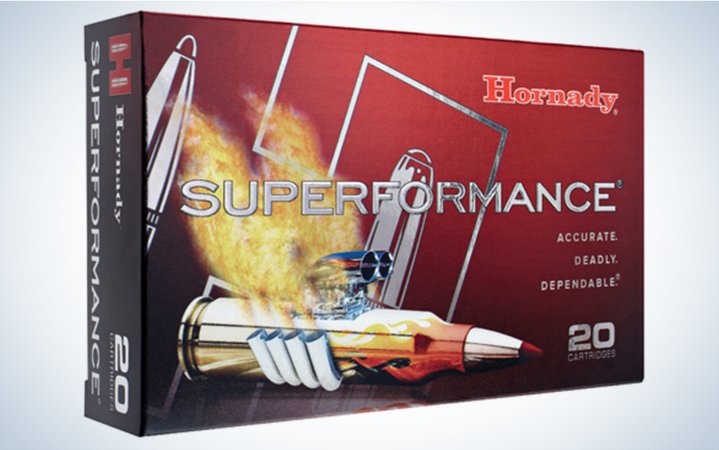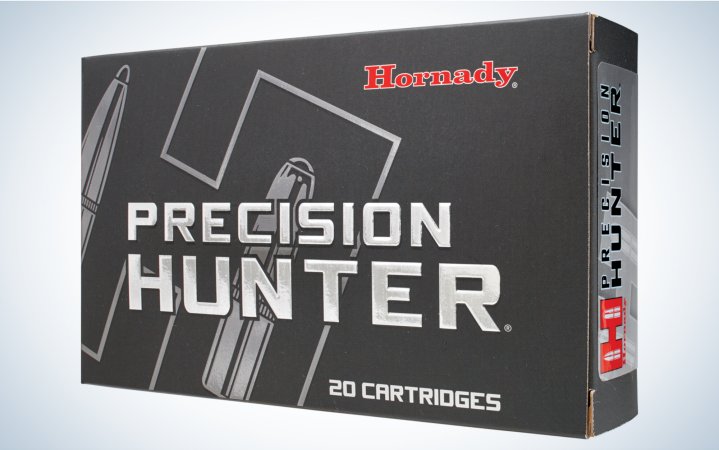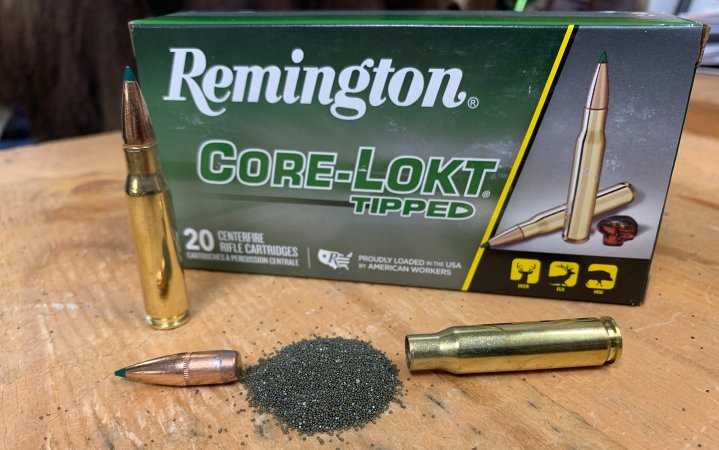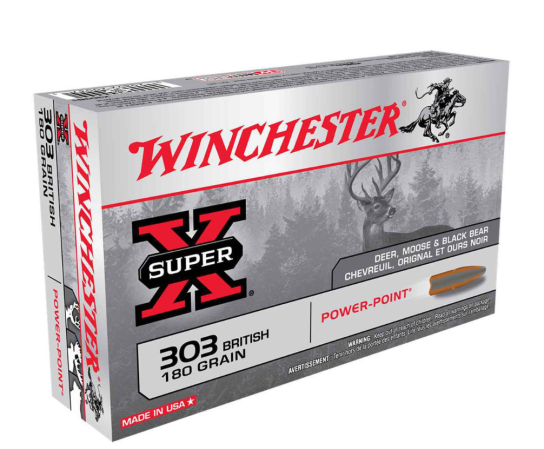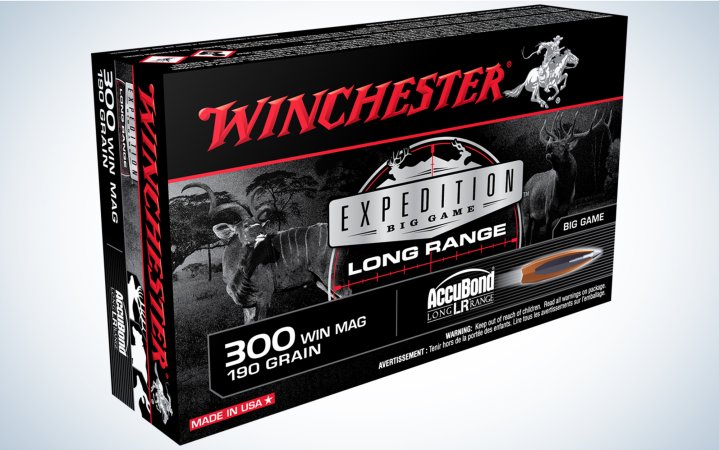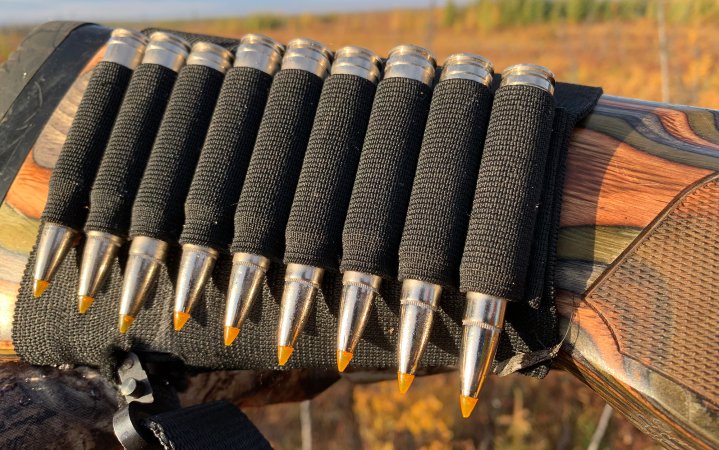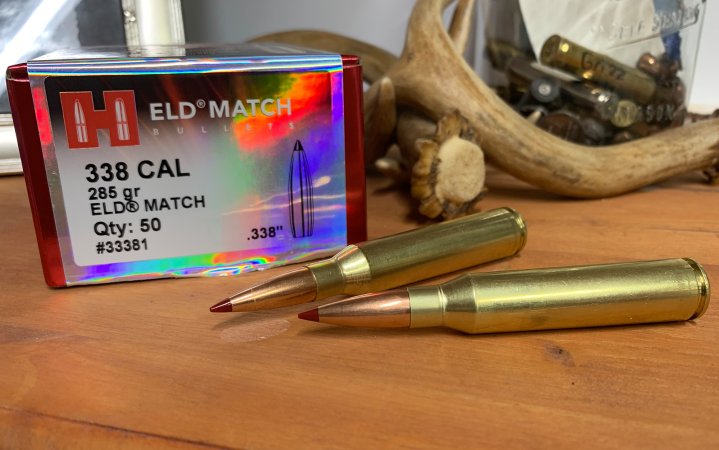We may earn revenue from the products available on this page and participate in affiliate programs. Learn More ›
When it comes to suitable cartridge selection, most folks operate under the assumption that the larger an animal is, the more horsepower they need in a cartridge. So it goes with moose, where the sheer size of these ungulates causes many potential moose hunters to immediately wipe a swath of effective and perfectly suitable cartridges from consideration. Assembling a list of the best cartridges for moose a subjective task, and bigger doesn’t mean “best” in every context.
If it were all about penetration and power, why stop at anything short of the .50 BMG? I do know a guy who’s killed them with his Barret M82 and a 647-grain Barnes TSX. That would be boring, and the truth is that many potential moose hunters out there might already have what would be best for them. There’s more to it than muzzle energy, and although i’d make no claim that these are the best moose cartridges in every way, it’s a solid representation of proven choices from which any hunter can find a suitable option for them. This list might not require you to go buy the latest rifle or booming cartridge, but it’s full of proven performers. If you do your job, they’ll do theirs.

What Does a Moose Cartridge Need to Do?
In my 22 years of living in Alaska, I’ve tipped over around 15 moose myself and watched probably another 30 go hooves-up. Additionally, I have more than a few relatives and friends that can account for another century’s worth of punched tags and moose-killing wisdom.
If there’s anything I’ve learned over the years of shooting and handling moose, it’s that choosing when and where to shoot them is much more important than the caliber stamped on your rifle barrel. Moose are generally wimps, and you don’t necessarily need a heavy magnum rifle to get the job done quickly and efficiently. Regardless of caliber, you’ll be cussing yourself if you choose to take chancy shots through the brush or touch one off on a bull that’s standing in a swamp. Almost no calibers will drop them in their tracks with a double-lung shot, but they’ll nearly always take a few steps and simply fall over—whether the shot comes from a .243 or a .300 Win. Mag.
To be effective, a moose cartridge needs to have reasonable penetration and fire a bullet that will generally hold together at the velocity it leaves the muzzle. If you find that underwhelming, sorry. It’s the truth. Shoot a moose through both lungs and they die, quickly, every time.

Many will argue about the need to penetrate feet of muscle and bone to kill a moose at any conceivable shot angle. There is some validity to that, but there’s also the matter of responsible shot selection and meat salvage. The average moose hunter is equally concerned with not destroying meat as they are with getting a moose down. Hit a bull in the shoulder blade or bone of the hind quarter with a .300 RUM or even a .300 Win. Mag. up close, and it’s often goodbye to a deer-sized portion of meat.
READ NEXT: How Big Is a Moose?
Moose can present some shot angles that are deep and tough to penetrate, but if you practice any bit of ethical restraint, you’ll often have the option of either a direct frontal shot into the soft stuff at close range, or a broadside shot at a moose’s exceptionally large lungs and easy-to-penetrate ribs. When selecting ammunition for moose hunting, just make sure that you’re using a bullet that will hold together at the velocity your cartridge is shooting. Each of the following cartridges has one of my favorite corresponding ammunition choices listed, but there are other good choices for each cartridge, and many of these loads are available in multiple cartridges.
.30-06 Springfield
Ammo Choice: Remington Premier 150-grain Swift Scirocco
The ’06 is old and boring, but I can’t find any way to justify it not being included in this list. It has taken an unimaginable number of moose and continues to do so. I don’t always abide by the “what worked for grandpa” theory, but in this case, I do. In normal times, you can find ammo virtually anywhere, and it flat-out gets the job done. In the north country, where moose live, you want a versatile rifle, so you might as well pair it with the ultimate all-around cartridge.
There are many excellent bullet choices for the .30/06, and most will gravitate toward the 180-grain options. That’s fine. I’ve always preferred 150-grain loads in my .30/06, and the moose can’t seem to tell the difference. A couple of my most dramatic ass-over-teakettle-flipping moose have been a result of using 150-grain Hornady interlock bullets, but the bonded 150-grain Swift Scirocco is typically more accurate and has excellent weight retention. After killing over 30 moose, it’s remained my uncle’s favorite moose medicine in his Winchester M70.
.243 Winchester
Ammo Choice: Federal Premium Vital Shok 100-grain Nosler Partition
Yes, you are reading this correctly. Blowhards will tell you that the .243 will simply bounce off a moose’s ribs, and that it’s better-suited for mice. Many don’t even take it into consideration for deer. However, it’s another of those quiet cartridges, and a favorite of many Alaska Natives, that has put moose down for decades. In fact, it is still the go-to rifle for many rural Alaska hunters. It’s a great choice for young or smaller-framed hunters—or a hunter that has nothing to prove. It’s on this list because of the sheer volume of moose it continues to take every year.
Bullet choice is especially important in small calibers like the .243. You want a bullet that will expand rapidly but retain weight. With the right bullet and simple, good shot placement, the .243 is a very effective moose gun. The 100-grain Nosler Partition is “old reliable” for the .243, and you’ll typically find it under the skin on the off-side of a broadside bull. Shoot them through both lungs and they’ll usually take a few steps and fall over dead.
.270 Winchester
Ammo Choice: Hornady Superformance 140-grain Hornady SST
Much like the .30-06, the .270 Winchester is an all-around workhorse. There is nothing flashy about it, but flash doesn’t kill big bulls. Known as an ideal cartridge for medium-sized game, the .270 is more gun that most people give it credit for. It will still get the job done plenty well on a moose. It doesn’t garner much attraction from today’s tinkerers and cartridge snobs, but it’s still one of the best all-around choices. It’s one of those cartridges that fits the bill for someone who only wants one big-game rifle.
There are lots of great bullet choices for the .270 as well, both in 130- and 150-grain. You can’t go wrong with any good bonded or monolithic bullet, and most soft points will get the job done tactfully. Across a variety of calibers, I’ve had excellent results with Hornady’s SST over the years. People knock it for rapid expansion, but the jacket is mechanically fastened to the core in two spots, and I’ve had more pass-throughs than not. I’ve always seen great penetration at a variety of velocities and calibers with this bullet.
6.5 Creedmoor
Ammo Choice: Hornady Precision Hunter 143-grain Hornady ELDX
There are now three certainties in life: death, taxes, and posterior inflammation from the 6.5 Creedmoor. Arguably, this spot belongs to the 6.5×55 Swede, but for contemporary practicality, I’ll still opt for the Creed. The 6.5×55 Swede has certainly done the legwork of establishing 6.5mm cartridges as viable moose killers, but the Creedmoor is a more efficient package. I’m sure this still wouldn’t pass muster in Sweden, but the Creed is not-debatably the most popular chambering of any recent hunting cartridge in the U.S., and it kills moose just as well as the Swede.
The 6.5 Creedmoor is excellent at a few things and does a lot of other things well. It’s on the lower end of the moose spectrum, but it will tip them over nonetheless. My favorite bullet in the cartridge is the 143-grain ELDX, and scientists are still trying to figure out whether that bullet in my Winchester XPR in 6.5CM, or climate change has done more damage. The ELDX gets a bad rap for supposedly blowing apart on impact. It’s something I’ve never seen, especially at the modest velocities of the 6.5 CM. Like any responsible hunter should, take good shots, hit both lungs, and get out the knives.

.308 Winchester
Ammo Choice: Remington 150-grain Core-Lokt Tipped
It’s arguable that the .308 and .30-06 should be an either-or matter, but for me, they both belong here. Much like its predecessor, there isn’t too much to say about the .308 that hasn’t already been said. With modern components, it can perform pretty close to what the .30/06 always was and it puts meat away just as well as it ever did. Frankly, anyone who tells you it lacks the wallop to get the job done doesn’t know what they’re talking about. I know of a lot of moose, and even several big Kodiak bears, that met their end quickly with the .308.
The .308 has a wide range of bullet weights and excellent options available. In the midst of the recent ammo shortage, the .308 was one of the few cartridges with a decent selection still on the shelf. I tested 11 different rifles and a variety of ammo in .308 in 2022 and I’ve been impressed with the Remington 150-grain Core Lokt Tipped. It was the most consistently accurate factory hunting ammo I tested, and the mechanically fastened core and jacket seem to hold together well. A recent bull moose that a buddy killed took one shot through the ribs with the 150-grain .308 load, took two steps, then nosed into the ground. The bullet passed through and wasn’t recovered.
.303 British
Ammo Choice: Winchester Super X 180-grain Power Point
It’s easy for Americans like me (even in Alaska) to get bogged down with what we use, and we like to think that cartridges like the .30/06 are the undisputed kings of the North American continent. However, in Canada, the .303 British has maintained a similar role for many moose hunters. You’ll never see one here in Alaska, but this old, medium-sized 30 caliber has likely accounted for as many moose as any. Being a military cartridge, its use and availability in Canada was much like our own beloved .30/06.
I can’t speak for Canada, but you’ll have a hell of a hard time finding .303 British ammo in moose country stateside. It’s a simple, modest-velocity cartridge that started out using black powder, then cordite. It’s a bit slower than the .30/06, and simple cup-and-core bullets like Winchester’s Power Point are just the type of ammo that’s put moose in the freezer for decades in the .303.
.300 Winchester Magnum
Ammo Choice: Winchester Expedition Long Range 190-grain ABLR
For many folks, we’re just now getting to what they might consider the bare minimum for moose. The .300 WM has firmly established itself as a fine cartridge for moose (and anything else on the North American continent). I would wager that for folks living in the more populated areas of Alaska, this might even beat the .30/06 and .243 in actual field use. To get the most of it, I’d recommend using 190-grain or heavier bullets. Below that, you aren’t gaining much over the .30-06, and cartridges like the 6.8 Western and 6.5 PRC maintain more energy beyond 400-500 yards.

My favorite bullet for the .300 Win. Mag. is the Hornady 212-grain ELDX, but it’s not offered in a factory loading that I’ve been able to find. For factory moose ammo, I find Winchester’s 190-grain ABLR load to be tough to beat. The ABLR expands reliably, shoots well, and is more rigidly constructed than the ELDX. It’s often not a good idea to shoot moose at long distances because of the hellholes they might die in. However, if you do need to reach out there, either of those bullets will give you great penetration. The last moose I shot with a .300 Win. Mag. was a touch over 400 yards and the single shot stuck under the hide on the back side of his ribs. Recovery was uneventful.
.338 Winchester Magnum
Ammo Choice: Federal Premium 200-grain Trophy Bonded Tip
I personally find the .338 Win. Mag. to be a bit of an “in-between” cartridge that can’t make up its mind whether it wants to be a “normal” rifle, or a real heavy hitter. I can’t argue that it’s not a popular all-around Alaskan rifle, but I feel it’s overkill for some game, but doesn’t quite carry the authority that big magnums (.375 and up) do. For moose, however, it does a great job, and it does that job year after year.

The .338 Win. Mag. was always easy to find ammo for here in Alaska, and, after a two-year disappearance, it’s coming back as the ammo shortage fades. The .338 is an authoritative moose cartridge in a variety of bullet weights, and most choose bullets in the 225-grain range. I really like the slight bump in velocity of the 200-grain Trophy Bonded Tip, and my rifle shoots it well. The bullet is tough enough to handle just about anything, and the last moose I shot with it was quartering-to at a short 25 yards. He didn’t go far.
7mm Remington Magnum
Ammo Choice: Federal Fusion 175-grain Bonded Soft Point
The 7mm is another American staple cartridge. It’s been around a long time and carries some station with just about everyone. As with many of these classic cartridges, that means they’ve proven themselves. There are several great cartridges offered in 7mm, and new ones like the 7 PRC are incrementally moving the ball forward, but the seven mag can still hold its own. In normal times ammo is everywhere, but like others, it’s still relatively scarce right now. This cartridge is no longer a flashy new magnum, but it will still cut gravy. If my father-in-law’s old 7mm named “Thumpy” could talk, it would tell of more moose put on the meat pole than most people could fathom.
As with others on this list, there are lots of great options for moose ammo in the 7mm Rem. Mag. One relatively underrated hunting load (in many calibers) is Federal’s Fusion. This 175-grain load typically isn’t as accurate (or as expensive) as some premium options. However, it’s a great bullet for the money. When you can find it, it’s reasonably priced, and the bonded soft point Fusion bullet won’t disappoint.
.338 Lapua Magnum
Ammo Choice: Hornady Match 285-grain ELDM
Many moose hunters find it odd to shoot farther than 100 or 200 yards, but for some, it’s the opposite. Shooting moose at long distances can be an ill-advised venture, but some hunt in areas that are well-suited for it. There are more efficient long-range cartridges that are excellent for moose, but I can tell you for a fact that the .338 Lapua Mag. will knock the hell out of them. Rifles chambered in .338 Lapua typically aren’t the brush-busting, swamp-wading kind, but if your style of hunting suits it, it will put moose down with authority, and is the go-to choice for several moose hunters I know here in Alaska.
Read Next: Best Bear Cartridges
I typically wouldn’t recommend match bullets for shooting moose, but this is one exception. Between a few family members, we have killed about a dozen bulls with the 285-grain ELDM bullet from 175 yards to over 600 yards. With those heavy bullets, the .338 Lapua isn’t screaming fast, and even at the closer ranges, the bullets seem to hold together very well. If you have concerns, use a bullet like the 270-grain ELDX.

Final Thoughts
Though many hunters believe that bigger is better when it comes to moose, the truth is that moose aren’t very hard to kill. They might not hit the ground in dramatic fashion, but one shot through the lungs will kill them as quickly as the next. There are valid reasons for choosing big cartridges, but mild-recoiling, accurate cartridges are rarely a poor option. What matters most is taking a cartridge that you are confident in and can shoot well, making ethical decisions, and choosing good shot angles and situations.


